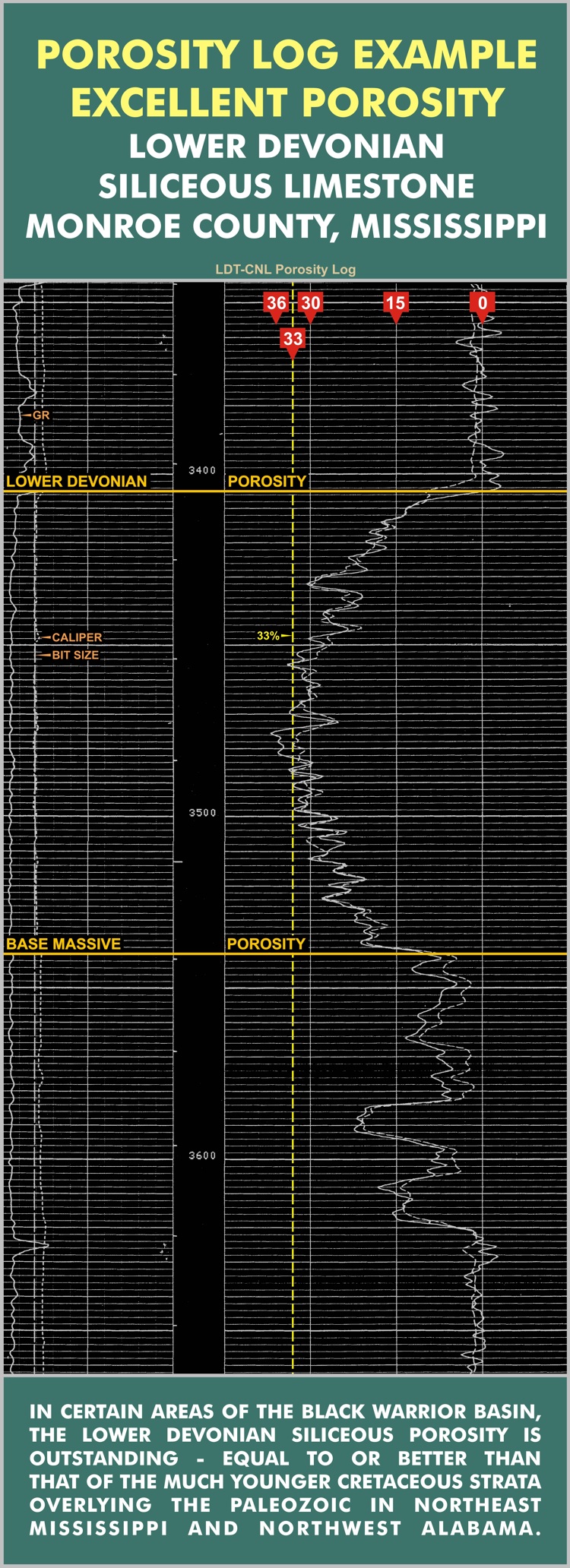THICK TRIPOLITIC POROSITY BUT FEW OIL AND GAS RESERVOIRS FOUND SO FAR
Use the Black Warrior Basin geology links below or the Interior Salt Basin geology links in the left column to navigate to different geologic topics.
|
|
|
|
|
|
|
The Devonian of the Black Warrior Basin consists of two facies: in the Upper Devonian, the facies is a very dense and impermeable, siliceous (cherty) limestone, ranging from 100 to 200 feet in thickness; in the Lower Devonian, the facies is a generally more porous limestone that frequently contains "massive" chert intervals that can exceed several hundred feet in thickness. In many areas of the Basin, the Lower Devonian chert has been "weathered", forming a highly porous and moderately permeable tripoli; this tripolitic chert is an extremely important fresh water aquifer in Alcorn, southeastern Tippah, Prentiss, eastern Union and western Tishomingo Counties in northeast Mississippi. Fresh water (total dissolved solids <10,000 ppm) persists in the Lower Devonian as far south as southern Lee and Itawamba Counties in Mississippi, where the first significant normal faulting interrupts the influx of fresh water moving south and east in a downdip direction from the Cretaceous/Devonian subcop that trends NE/SW across Alcorn, Prentiss and Tippah Counties. Those counties further south and west - most notably Monroe, Lowndes, Clay and Chickasaw Counties - harbor the highest number of Devonian penetrations and the highest potential for oil accumulations in the Basin, but good gas shows have been encountered in wells as far west as DeSoto and Tunica Counties, which border Arkansas. In some areas (such as Tunica County), the younger Ft. Payne chert of the basal Mississippian is often confused with its older Devonian counterpart.
The best porosity in the Lower Devonian tripolitic facies is typically encountered in central Monroe County, Mississippi, where porosity as high as 32% has been observed on the density/neutron log (see below). Obviously this outstanding porosity (at a depth of 3,400 to 3,500 feet) would be an excellent hydrocarbon reservoir; however, to date only small accumulations have been discovered and produced (an example being McKinley Creek Field, in southern Monroe County). While there has been much speculation regarding the apparent lack of large Devonian traps in the Black Warrior Basin (poor lateral seal along fault traps; distance from source rocks), it should also be noted that there is still only a limited number of Devonian penetrations in the Basin, and many attractive trapping mechanisms (overthrust, subsalt) remain untested.
